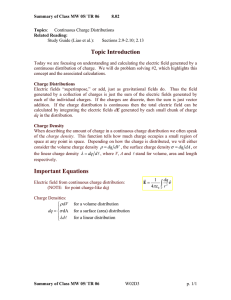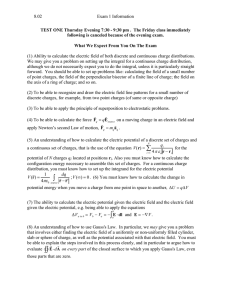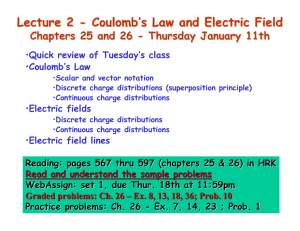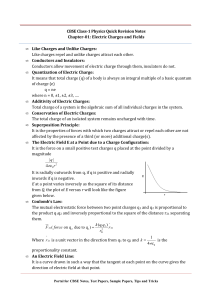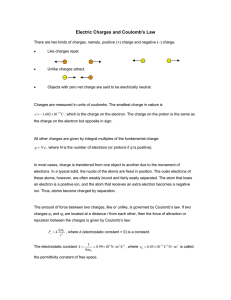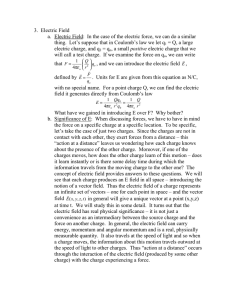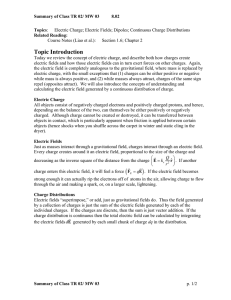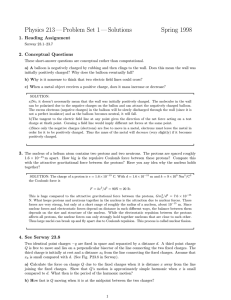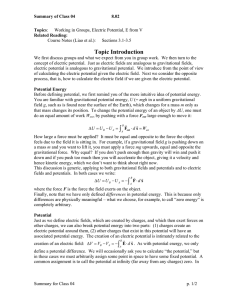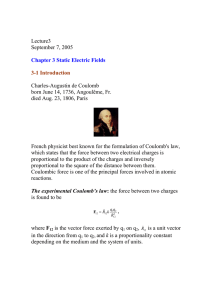Summary of Class 6 8.02 Friday 2/11/05 Topics
advertisement
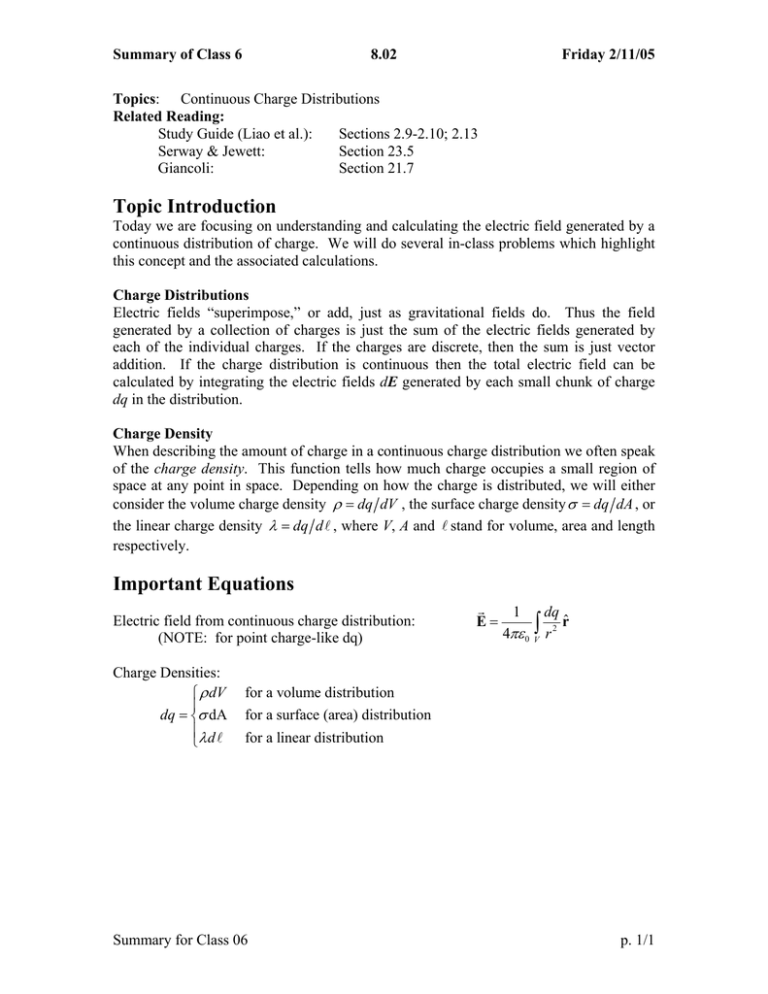
Summary of Class 6 8.02 Friday 2/11/05 Topics: Continuous Charge Distributions Related Reading: Study Guide (Liao et al.): Sections 2.9-2.10; 2.13 Serway & Jewett: Section 23.5 Giancoli: Section 21.7 Topic Introduction Today we are focusing on understanding and calculating the electric field generated by a continuous distribution of charge. We will do several in-class problems which highlight this concept and the associated calculations. Charge Distributions Electric fields “superimpose,” or add, just as gravitational fields do. Thus the field generated by a collection of charges is just the sum of the electric fields generated by each of the individual charges. If the charges are discrete, then the sum is just vector addition. If the charge distribution is continuous then the total electric field can be calculated by integrating the electric fields dE generated by each small chunk of charge dq in the distribution. Charge Density When describing the amount of charge in a continuous charge distribution we often speak of the charge density. This function tells how much charge occupies a small region of space at any point in space. Depending on how the charge is distributed, we will either consider the volume charge density ρ = dq dV , the surface charge density σ = dq dA , or the linear charge density λ = dq d A , where V, A and A stand for volume, area and length respectively. Important Equations Electric field from continuous charge distribution: (NOTE: for point charge-like dq) Charge Densities: ⎧ ρ dV ⎪ dq = ⎨σ dA ⎪λ d A ⎩ G 1 dq E = r̂ ∫ 4πε 0 V r 2 for a volume distribution for a surface (area) distribution for a linear distribution Summary for Class 06 p. 1/1
